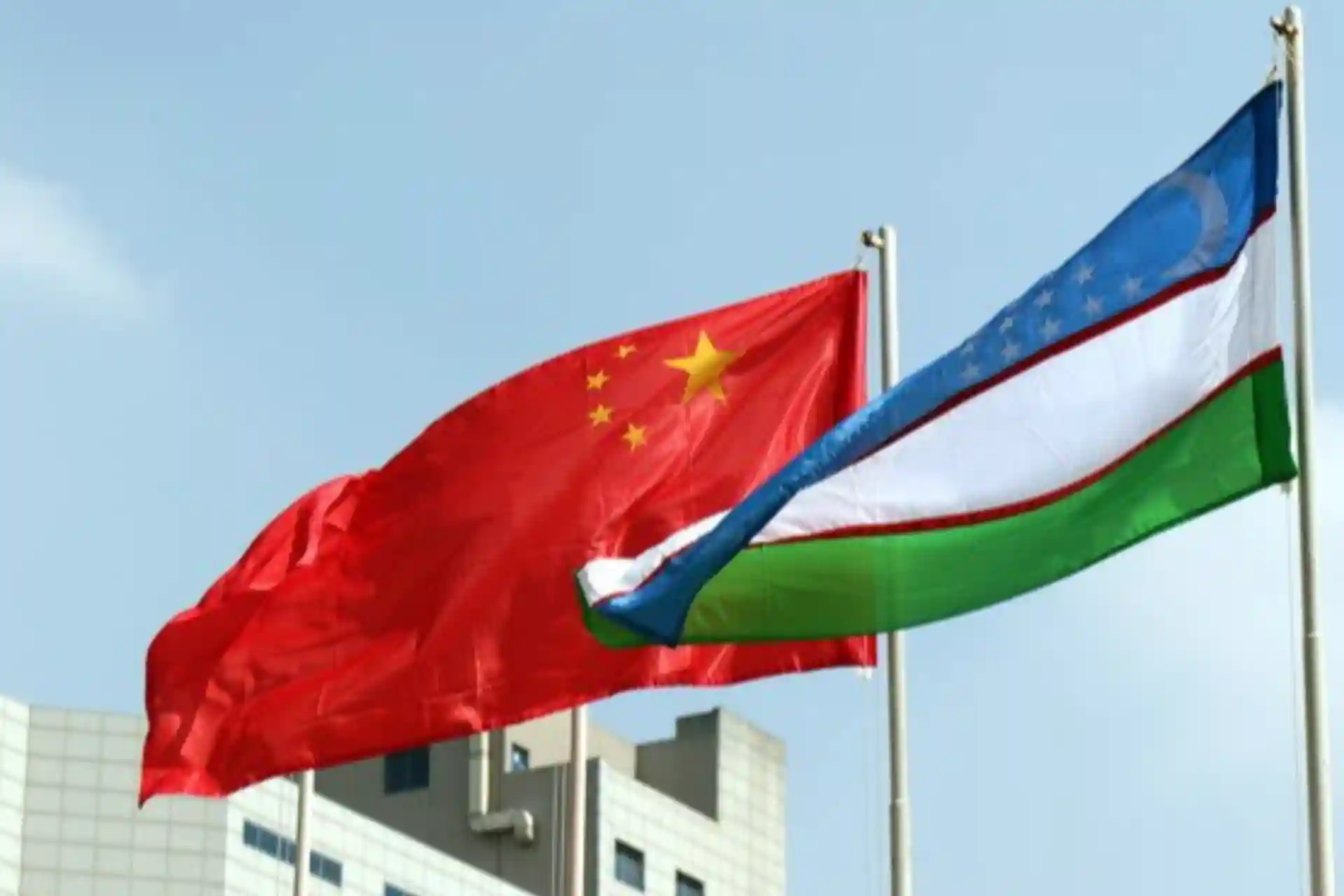23.12.2024 16:30
1716
Tajikistan was named the most dependent country on China in Central Asia. What about Uzbekistan?
China, the world's second-largest economy, is struggling to overtake the United States as the world's largest economy, and continues to lend large amounts of money to many countries around the world. Some of the money it lends is in the form of cash, while the rest is in the form of investment.
That is, China allocates money for a major project in a certain country on the condition that it carries out the construction work itself.
There is not enough discussion about how China has become a global power, how this process has happened in general, and what it means for the world. While many believe that China is exporting its development model to other countries and imposing it on them, some believe that Chinese actors also work through local actors and institutions to adapt and appropriate local and traditional forms, norms, and practices to expand their influence.
The example of Tajikistan, whose dependence on China is growing
China is currently lending large amounts of money to most of the world's developing countries, including Central Asian countries. Tajikistan is considered the leader in this regard, and it remains the most dependent on China out of the five countries. According to Russian analysts, the republic "is already facing difficulties in repaying its debt to China."
China has spent $105 billion to finance development in Central Asia over the past 22 years, of which $18 billion has been channeled to Uzbekistan. Half of this amount is in loans provided by the China Development Bank (CDB), an important financial instrument of China's foreign economic policy.
According to the Ministry of Finance of Tajikistan, as of January 1, 2024, Dushanbe's external debt amounted to $3.2 billion, or 26.9 percent of GDP. The country's largest creditor is China, which owes it $900 million. The bulk of this debt is from the Exim Bank of China.
According to experts from the Russian Analytical Credit Rating Agency (AKRA), the most pressing goals for China in Central Asia are the creation of transport corridors and diversification of resource use within the framework of the "One Belt, One Road" initiative.
According to the agency's study "Between East and West," China is providing external financing, which is typically cheaper than market debt, to achieve these goals.
"For example, the Export-Import Bank of China has provided 18 loans to Tajikistan at interest rates of 2-2.5%, with a grace period of five to seven to nine years, and a loan term of 25 years," the study authors note, citing data from the Ministry of Finance of Tajikistan.
They argue that the "One Belt, One Road" initiative aims to expand foreign trade routes for China and connect it more deeply with the Western market.
Today, this debt policy of China is referred to by many experts as a "debt trap" policy.
Debt trap diplomacy
The concept of "debt trap diplomacy" was first proposed in 2017 by Indian scholar Brahma Chellaney. The term refers to a relatively new policy tool of China's "One Belt, One Road" initiative. The strategy involves China lending large amounts of money to low-income, heavily indebted countries that they cannot repay. As a result, these borrowers are forced to transfer strategic assets to China to ease their debt burden. Recent studies show that Beijing has become a major emergency bailout lender for these countries, many of which are struggling to manage their debts.
Between 2008 and 2021, China has provided $240 billion to “rescue” 22 countries, mainly those participating in Xi Jinping’s “One Belt, One Road” project. Sri Lanka, Pakistan, Mongolia, Zambia, Congo, Djibouti, Kenya and Ethiopia, as well as Central Asian countries, have suffered significantly from China’s debt trap policy in recent years. The example of Tajikistan above shows that in any case, there will be a serious dependence on China. Tajikistan is not the only Central Asian country to borrow from China.
What can be said about Uzbekistan?
In recent years, the growth rate of Uzbekistan's external debt has continued to increase sharply. In particular, at the end of 2017, the state debt amounted to $11.6 billion, but by the end of 2023 it reached $34.9 billion, or a three-fold increase.
Due to strong political control by the government in Uzbekistan, society has not yet shown significant social or political enthusiasm about the country's growing external debt. As of July 1, 2023, China is Uzbekistan's largest single creditor. Uzbekistan's debt to China is $3.8 billion, while Uzbekistan's other major creditors, Japan and South Korea, have lent the country $2.1 billion and $900 million, respectively.
When did Uzbekistan start getting closer to China?
After the Andijan events of 2005 and international criticism, Uzbekistan found a reliable ally in China. This period marked the beginning of China's large-scale investment in the Uzbek economy. This cooperation will continue to develop rapidly in the coming years, against the backdrop of Uzbekistan's stable economic growth and its pursuit of economic openness.
Where are China Development Bank loans going?
Over the past two decades, the leading sector of financial commitments in Uzbekistan has been industry, mining and construction (63.3 percent). These sectors include the largest projects in the region - the Central Asia-China gas pipeline and the "Golden Road" gas-to-liquids plant.
The second largest sector is transportation and warehousing, which is mainly related to the purchase of Boeing and Airbus aircraft. In third place is the energy sector. According to AidData, China is building infrastructure, carrying out construction and investing mainly in projects related to natural resources.
Although the amount is small, the telecommunications sector is also important. The China Development Bank began investing in Uzbekistan in 2007, with its first loan of $15.5 million going to Uzbektelecom. A year earlier, the bank had allocated $70 million to Tajikistan to develop the mobile communications company TK Mobile and $6.6 million to Kyrgyzstan's Kyrgyz-Telecom.
Debt-for-resources agreement
The Central Asia-China gas pipeline project is planned to repay loans provided by the China Development Bank and the Bank of China through gas sales. China is not averse to receiving debt in a non-cash form, for example, by obtaining the right to manage critical infrastructure or a license to develop resources.
For example, in 2019, the Chinese company TBEA acquired the rights to develop the Yuki Kumarg and Duoba gold mines in Tajikistan in exchange for the funds previously spent on the construction of the Dushanbe-2 thermal power plant.
This is also confirmed by statements by Kyrgyz politicians. In 2021, President Sadyr Japarov and in 2022, Prime Minister Akylbek Japarov (no relation) announced that if the debt to China was not paid, control over strategic facilities would be transferred to China. It is also worth mentioning the incident in 2011 when 1,158 square kilometers of Tajikistan's territory was transferred to China.
Corruption schemes
Another risk of working with Chinese banks and companies is getting involved in corruption schemes. In 2021, the China Development Bank was at the center of an anti-corruption campaign that resulted in the dismissal of nine senior executives. In September last year, the bank's former vice president, Zhou Xinyu, admitted to taking 5 million yuan ($712,000) in bribes.
There have also been numerous corruption cases involving Chinese companies in Kyrgyzstan. For example, after the Bishkek Thermal Power Plant reconstruction project by the Chinese company TBEA Co., Ltd., criminal cases were opened in Kyrgyzstan against several officials for corruption and abuse of power, including former prime ministers Sapar Isakov and Jantoro Satibaldiev. The Prosecutor General estimated the damage to the state at $111 million. Isakov was also accused of protecting the interests of TBEA, and later former president Almazbek Atambayev was also charged.
Additionally, in 2018, the CBRC, which is implementing the North-South Road project, was accused of inflating construction costs by up to $3 million per kilometer, and in 2021, the State Committee for National Security of Kyrgyzstan suspected the company of inflating prices by $123 million.
What is the right path for Uzbekistan?
The large loans provided to Uzbekistan by the China Development Bank over the past two decades have raised concerns and questions about the country’s long-term prospects. The fact that a large proportion of Chinese-financed projects in Central Asia require the use of Chinese equipment and services could limit local economic benefits and technological independence. There is also a high risk of losing control of strategic assets if loans are not repaid, as is evidenced by similar situations in neighboring countries. Finally, the potential for corruption in such large-scale financial transactions could undermine the intended development benefits.
Uzbekistan needs to be careful in managing its debt relationship with China. Tajikistan’s experience shows that excessive debt can lead to the loss of strategic assets and the curtailment of economic independence. In addition, as mentioned above, there is a risk of corruption in projects implemented with China. The Uzbek government should use approaches aimed at maintaining economic independence, taking into account long-term strategic interests, in managing debt policy. In this regard, limiting the size of debt, using domestic resources, and ensuring economic diversification are of great importance.
Uzbekistan needs to be careful in managing its debt relationship with China. Tajikistan's experience shows that excessive debt can lead to the loss of strategic assets and the limitation of economic independence. In addition, as mentioned above, there is a risk of corruption in projects with China.

